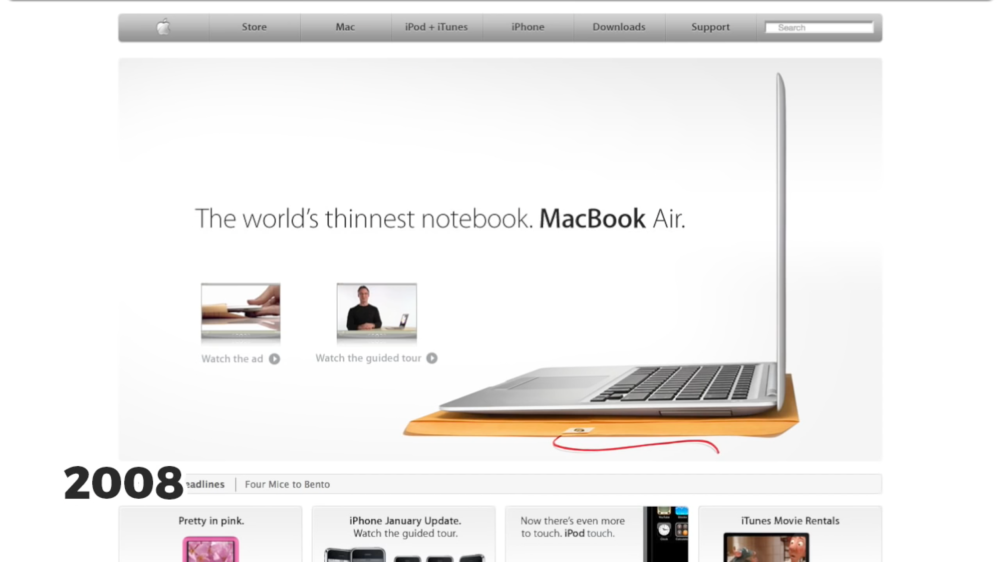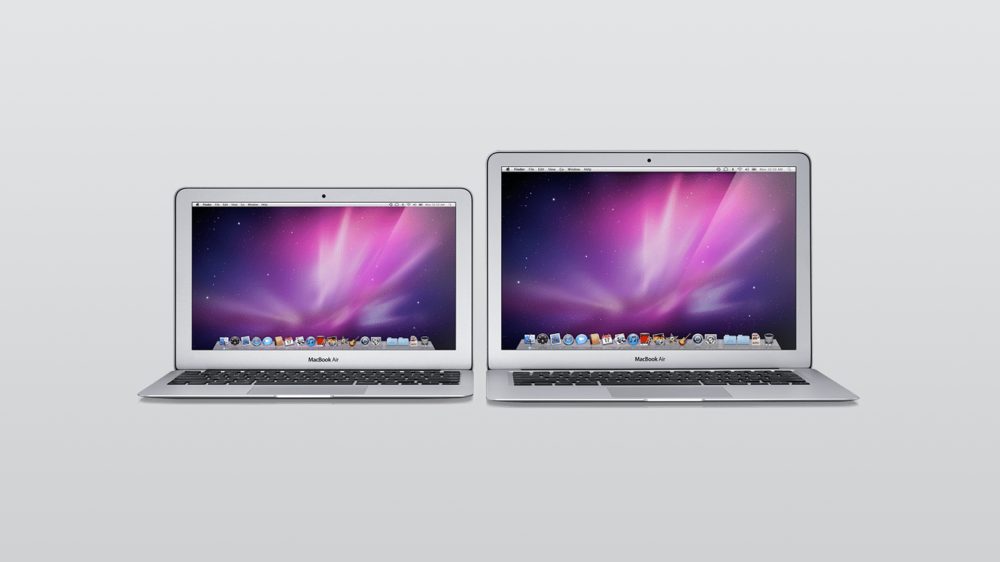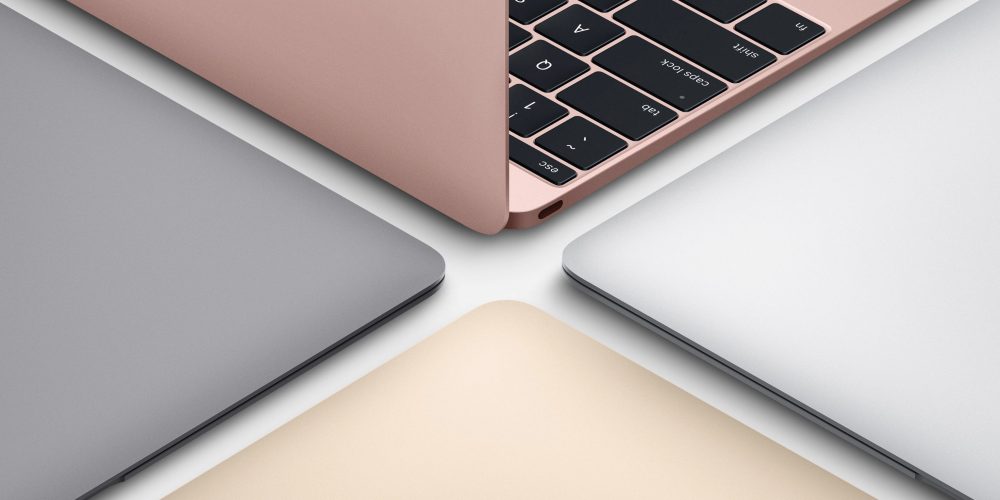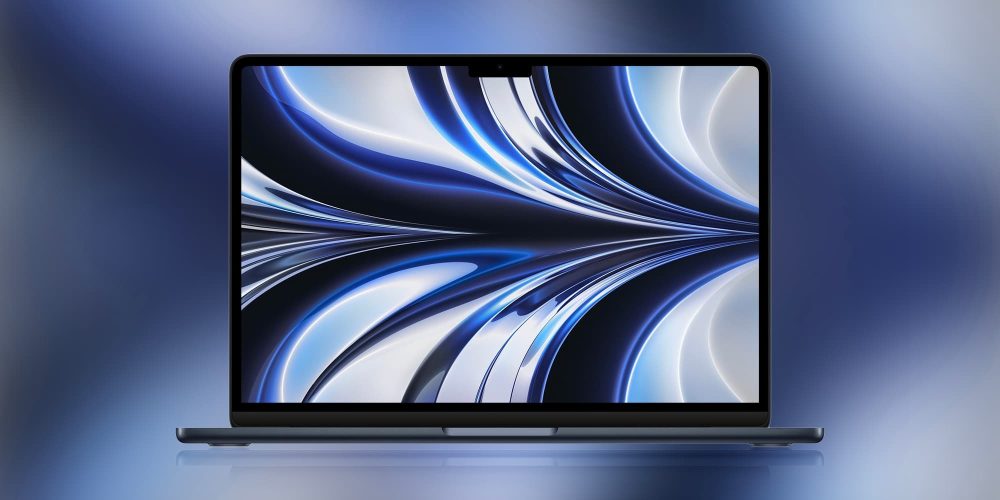The MacBook Air was announced by Steve Jobs 15 years ago today, on January 15, 2008. The event has become one of the most iconic Apple events ever, thanks in large part to the moment Jobs pulled the MacBook Air out of a manila envelope.
Beyond the event itself, however, the MacBook Air has also become of Apple’s most important and successful products – despite some speed bumps along the way…
The MacBook Air announcement
The MacBook Air was announced as part of Apple’s keynote at the Macworld Expo trade show. Alongside the MacBook Air, this Apple keynote also included the launch of the Time Capsule, updates to the iPhone and iPod touch, and much more. The MacBook Air, however, stole the show, and its introduction was Steve Jobs at his very best.
“We’ve built the world’s thinnest notebook—without sacrificing a full-size keyboard or a full-size 13-inch display,” said Steve Jobs, Apple’s CEO. “When you first see MacBook Air, it’s hard to believe it’s a high-performance notebook with a full-size keyboard and display. But it is.”
Here are the original specs of the entry-level MacBook Air announced by Steve Jobs, which became available to consumers January 29, 2008.
- 13.3-inch LED-backlit glossy widescreen display with 1280×800 resolution;
- 1.6 GHz Intel Core 2 Duo processor with 4MB L2 cache;
- 800 MHz front-side bus;
- 2GB of 667 MHz DDR2 SDRAM;
- 80GB hard disk drive with Sudden Motion Sensor;
- Intel Graphics Media Accelerator X3100;
- Micro-DVI port (includes Micro-DVI to VGA and Micro-DVI to DVI Adapters);
- built-in iSight video camera;
- built-in AirPort Extreme 802.11n wireless networking and Bluetooth 2.1+EDR;
- one USB 2.0 port;
- one headphone port;
- multi-touch TrackPad with support for advanced multi-touch gestures including tap, scroll, pinch, rotate and swipe; and
- 45 Watt MagSafe Power Adapter.
Those were relatively decent specs for the time, but the MacBook Air was clearly limited by its thin and light form factor. After all, it was the “world’s thinnest notebook” according to Jobs, measuring in at 0.16 inches at its thinnest point.
The MacBook Air was iconic for another reason, too: it was the first Mac that Apple offered with an optional 64GB solid-state drive…for an extra $1,300. As notable as it was for Apple to offer a MacBook with an SSD inside, the early MacBook Air reviews generally said that the benefits didn’t outweigh the cost.

In general, the first version of the MacBook Air recovered mixed reviews, with praise for the design, and criticism for the performance and battery life. Many reviews acknowledged, however, that the MacBook Air was the first step toward the future of the MacBook lineup. Here are some fun lines we’ve pulled from those first reviews:
Engadget’s Ryan Block:
- “It’s the thinnest, and if we may say so, sexiest laptop around today.”
- “The Air simply doesn’t have the power to be many users’ primary machine, while also lacking many of the features considered a necessity by business travelers.”
- “There simply isn’t any way to transparently replace all the functionality of an optical drive yet.”
- “Perhaps the largest side-effect of the Air won’t be ditching optical drives, though; for the rest of Apple’s consumer base it’s now just a matter of time before other Mac laptop lines benefit from the technical and engineering advances that made this thing so thin and light.”
Macworld’s Jason Snell:
- “As someone who uses the optical drive in his laptop so rarely that I sometimes forget whether its slot is on the front or the side, I don’t really consider the lack of an optical drive a major omission.”
- “The MacBook Air is the slowest Mac in Apple’s current product line, though its Intel Core 2 Duo processor is fast enough for general use.”
- “But once I slipped that three-pound laptop into my backpack and threw the bag over my shoulders, I realized that sacrificing some storage space and some processor power was ultimately worth it for me.”
Arstechnica's Jackqui Cheng:
- “One way to look at the MacBook Air is as the largest and most capable iPod in Apple’s line—think of it as an iPod touch Extreme with a built-in keyboard.”
- “I found the Air’s size and weight to be nothing less than absolutely delightful.”
- “Despite all of the Air’s (sometimes glaring) flaws, I plan to keep it and use it as my notebook from here on out (maybe with a hard drive upgrade in the near future, anddefinitelywith a battery upgrade when they become available).”
Other reviews:
- AnandTech
- Pocket-lint
- LaptopMag
- NotebookCheck
- Gizmodo
The future of the MacBook Air

Following the initial introduction of the MacBook Air in January of 2008, it became a mainstay of Apple’s laptop lineup. It was updated with a number of spec and performance improvements just 9 months later. It was redesigned with a tapered unibody enclosure a year later, which also marked the introduction of a new 11.6-inch form factor.
The MacBook Air received regular spec bumps through 2011, 2012, and 2013, but went without updates in 2014 and received a minor spec bump in 2015. Two years later in 2017, the 13-inch MacBook Air saw another performance boost, but the 11-inch model was discontinued.
9to5Mac’s Take

Apple clearly lost the vision for the MacBook Air somewhere around 2015, when it sat neglected as the company focused on the 12-inch MacBook instead. It saw scattered (and minor) performance improvements, no changes to the design, and was clearly on the way out the door.
That 2017 MacBook Air hung around in Apple’s lineup for a long time (perhaps too long). It wasn’t discontinued until July 2019, at which point it was the last laptop sold by Apple without a Retina display and with USB-A ports and a backlit Apple logo.
The 12-inch MacBook was the star of the show starting in 2015 and it wasn’t until 2018 that Apple realized it might have made the wrong decision. At that point, the MacBook Air had featured pretty much the same design for eight years. That’s a long time for what many viewed as Apple’s most popular laptop.
One thing I think Apple learned over the years is that the “MacBook Air” name holds a lot of power. The attempt to phase out the MacBook Air in favor of the 12-inch MacBook was a clear failure (it wasn’t the only failure for the MacBook lineup around that time).

But starting in 2018, Apple started to make changes. The 12-inch MacBook received its last major update in June of 2017 and Apple unveiled a major update for the MacBook Air just over a year later. This MacBook Air finally offered a Retina display, a new design that maintained the iconic thinness and lightness, and notable performance upgrades.
The 12-inch MacBook was unceremoniously discontinued on July 9, 2019. There are rumors it may return, but this time in addition to the MacBook Air – not as a replacement.
In 2020, the MacBook Air became the first Apple laptop to switch from Intel to Apple Silicon, alongside the 13-inch MacBook Pro. Apple Silicon has proven to be a game changer for the MacBook Air, allowing Apple to pack more power and efficiency into the machine than ever before.

In 2022, the MacBook Air was redesigned to ditch the iconic tapered design in favor of a flat-edged unibody form factor. This redesign also saw the introduction of the M2 chip inside, for yet another boost in performance and efficiency, as well as the return of MagSafe for charging.
Looking ahead, the future of the MacBook Air is brighter than ever. Apple Silicon has proven that even a small and light computer like the MacBook Air can offer incredible performance and battery life, without compromise. There are rumors that Apple might even expand the MacBook Air lineup to include a new 15-inch model sometime in 2023.
The MacBook Air has come a long way over the last 15 years, despite some neglect around the halfway mark. Hopefully, Apple learned its lesson and the MacBook Air will be a well-supported option in the Mac lineup for years to come.
Follow Chance: Twitter, Instagram, and Mastodon
FTC: We use income earning auto affiliate links. More.
Check out 9to5Mac on YouTube for more Apple news:
Read More














